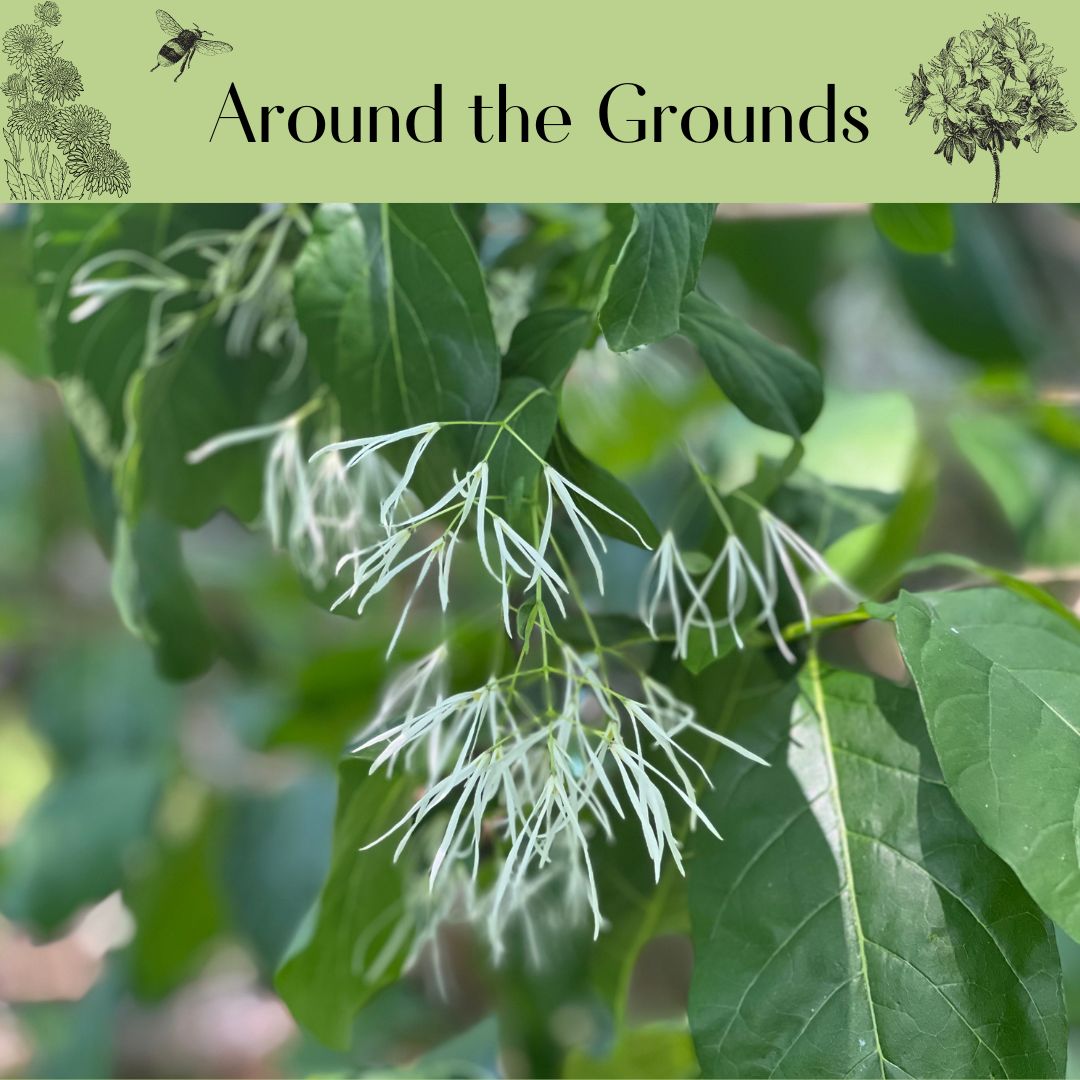After the Redbuds, Dogwoods, and Crabapples have finished blooming, there is another small native tree that continues the spring flower show well into June – if only more people knew about it! Chionanthus virginicus, or Fringe Tree, should be mainstream, but has somehow been relegated to the “fringes” of the suburban gardening world. This is a tree we should see everywhere!
In late May, Fringe Tree covers itself in fluffy white flowers with long, fluttering petals. The flowers are lightly fragrant with a delicate lilac scent. The leaves, which begin to emerge around the same time as the flowers, are large, dark green, and shiny. The resulting effect is stunning.
Growing to a maximum height of 25 feet and 10-15 feet wide, Fringe Tree is ideal for home landscapes. As a small tree or multi-trunked shrub, it has a rounded shape that rarely needs pruning. It fits beautifully in a border with shrubs and perennials, or it can be featured as a lawn tree in a small yard. It is the perfect size for under power lines or to frame a patio or deck. It flowers best in full sun, but the leaves stay fresher all summer if there is some afternoon shade. In fall, the leaves turn a warm yellow.
Fringe Tree is adaptable to a variety of soil types, but is happiest in slightly acidic soil with even moisture. It is generally care-free and not susceptible to pests or diseases. Compost or organic fertilizer will help get the roots established, but nothing more is really needed over the 50-year life span of this lovely native tree.
The scientific name Chionanthus virginicus (pronounced “kai-o-nan-thus vir-gin-i-cus”), is from the Greek chio, meaning “snow,” and anthus, meaning “flower.” The name also refers to its native habitat in the state of Virginia, but its original range extended from rich woods and streamsides in New Jersey south to Florida and west to Missouri and Ohio. Today, Fringe Tree grows successfully throughout the Eastern US, Mid-Atlantic, and Central regions as it is hardy in Zones 4 to 9.
Several common names for this lovely tree are more descriptive than the botanical name, including American Fringe Tree, Old-man’s Beard, Grancy Gray-beard, and Sweetheart Tree. An Asian fringe tree has been introduced in the nursery trade, but as always, the native tree is a better choice. Native bees and butterflies visit American Fringe Tree, and it is well-adapted to our soil and climate. In Southeastern states, Fringe Tree is the host plant for several moths in the sphinx moth family.
Fringe Tree is dioecious, meaning the whole plant is either male or female. It is sometimes said that the male tree has showier flowers, but a side-by-side comparison doesn’t always support that notion. If the flowers of the female tree are pollinated by bees that have visited male trees, the female tree will produce interesting fruits that strongly resemble olives. In fact, Fringe Tree is in the same botanical family as olive trees. The fruit is not edible for humans, but many of our backyard birds love it. Cardinals, Blue Jays, Catbirds, Robins, and Mockingbirds will flock to a fruiting Fringe Tree.
Photo: Scott Zanon
One of our most famous Virginians, Thomas Jefferson, loved the Fringe Trees of his home state. When he was living in France in 1786, he requested that Fringe Tree seeds be sent to him to share with his European friends. Perhaps not coincidentally, Fringe Tree is considered by European horticulturists to be one of the finest American plants introduced to English gardens.
So, if you’re looking for a beautiful small flowering tree, Fringe Tree is an excellent choice. We really should bring it back from the fringes and into the mainstream of American home gardens!

